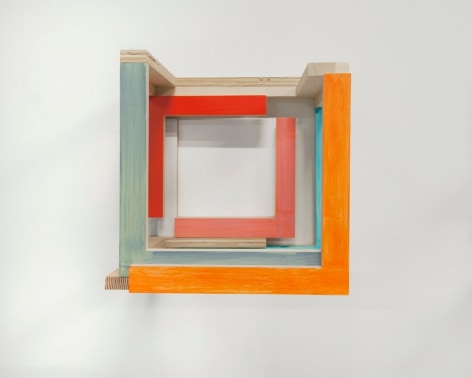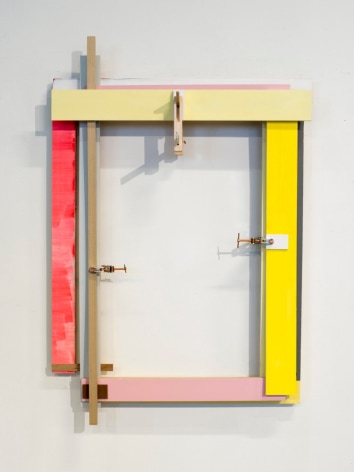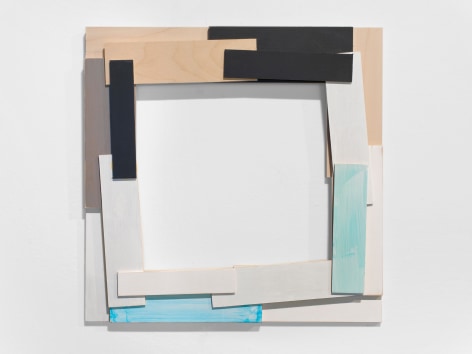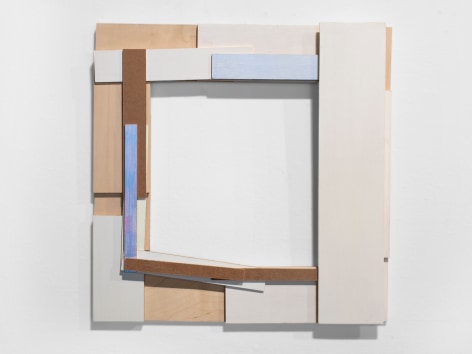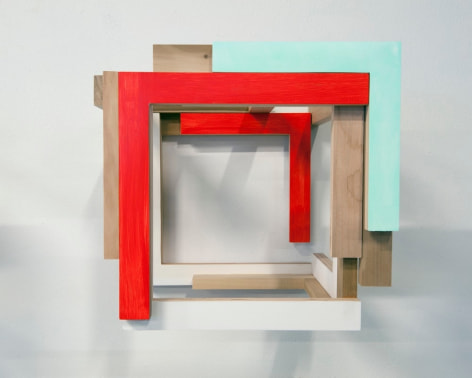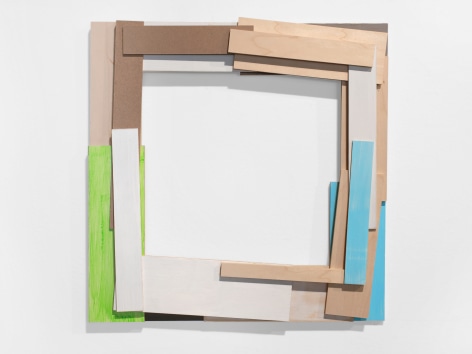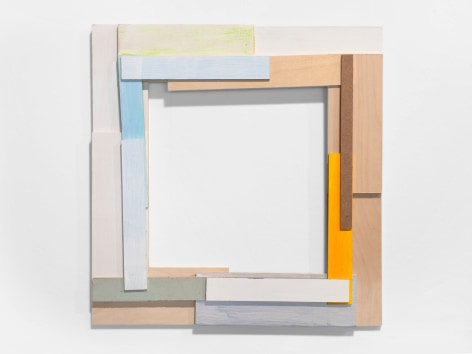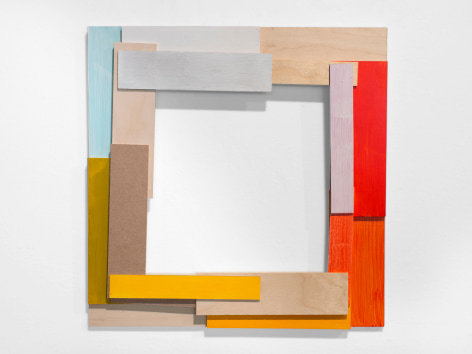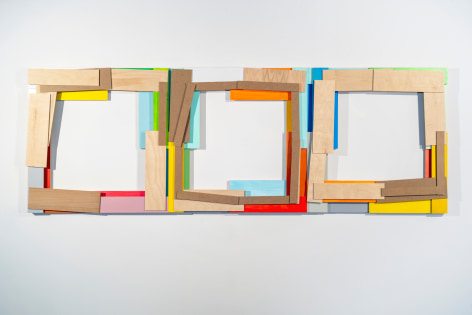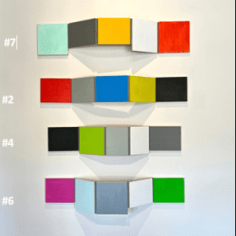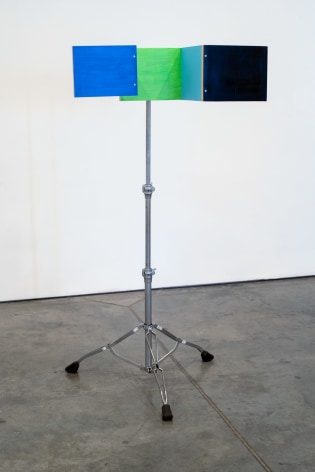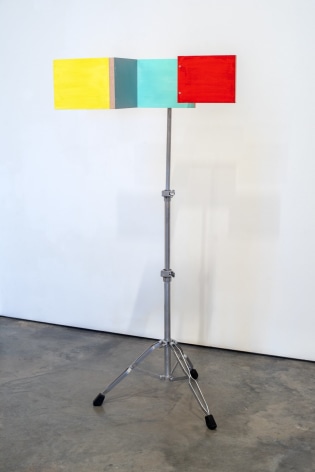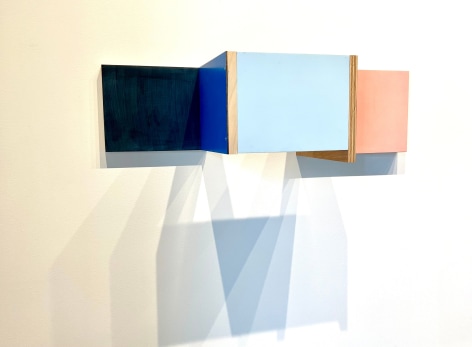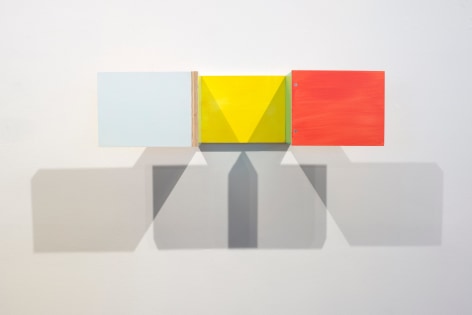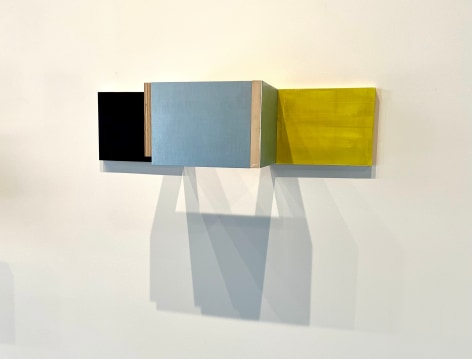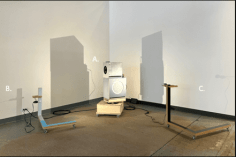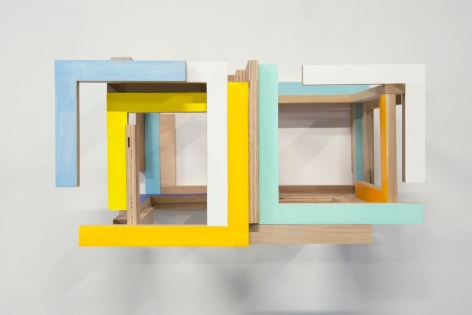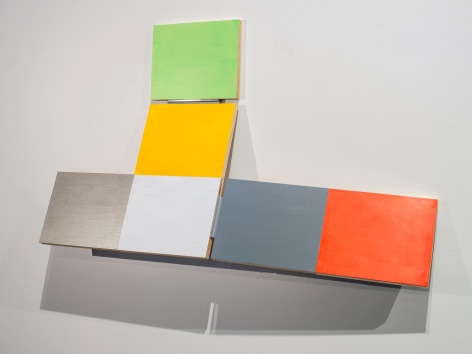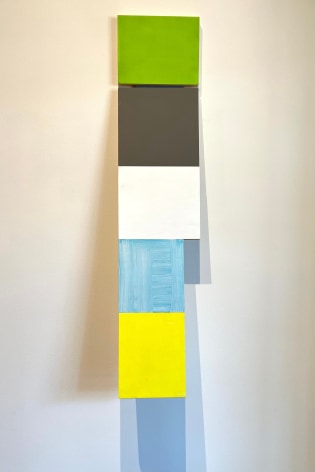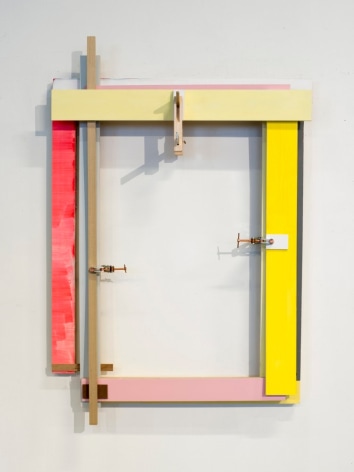CROSSING SIGNALS
Revisiting Code Practice
This exhibition was almost fully formed over two years ago. And then it wasn’t – interrupted first by the onset of the pandemic, and then re-imagined through an online exhibition of animations informed by the work. All the while work was happening in the studio and other bodies of work formed and progressed.
The original exhibition title was CODE PRACTICE and it is still a good umbrella for this body of work. A pre-pandemic version was shown in Kansas City, a catalog was produced, essays written, and many of the same works are included. It all has a very close relationship to the nature of the current show, but the interim works along with world events have changed everything. What was CODE PRACTICE then is not what CODE PRACTICE is now, thus the new exhibition title. Included in an introduction to the original catalog by Halcombe Miller is a synopsis of my process which predicts the ensuing two years.
Woodfill’s approach embraces the provisional: the context of the world, his life and his studio is not static and neither is the work. Instead of observing his artifacts, the residue of his process, with a sense of heroic completion, Woodfill’s art inspires yet another set of parameters, yet another set of adjustments. While in his studio many works are subject to almost continuous reassessment and alteration. Compositions and material elements are often discarded and later retrieved as found fragments for new compositions.[1]
Google searches[2] led to an interesting Wikipedia page on “signalling theory” regarding evolutionary biology, specifically a section on honest signals. It states that “signaling systems are shaped by mutual interests between signalers and receivers.” In a biological sense, an honest signal conveys useful information to the receiver reliably.
Aposematic signals are generally visual warnings like a poison dart frog, and faking this warning is called Batesian mimicry. Learning to distinguish between a real and a fake aposematic warning signal is an advantage to the receiver, and it sets off an evolutionary arms race “making such fake signals unstable.” Honest signals are evolutionarily stable. Dishonest signals – cheating – can cause the signaling system to collapse if they are too pervasive.
The occurrence of signals crossing might indicate the loss of stability, not due to cheating, but to an evolving set of conditions – the background noise changes and the signal to noise ratio re-forms. As the context changes, the signal is received differently. This reception then informs the next use of the signal.
[1] Code Practice (verb) by Halcombe Miller, James Woodfill / Code Practice, 2020, Union Office, Kansas City, MO
This set of analogies, along with others, in dialog with the abstractions of the studio work form a continual “call and response” within my process, not only from responses by the viewers (receivers) but from observations of these responses forming. In his essay for the CODE PRACTICE catalog titled “Terms and Conditions,” Matt Wycoff discusses this process.
In ongoing studio and reading notes titled Loose Rules, Woodfill catalogues and interprets various terms, ideas, and phrases for their relevance to his activities in the studio. Some of this language is invented, as with Woodfill’s phrase “a lot of minimalism.” Other bits are borrowed, such as the artist Donald Judd’s term “specific objects,” and the theorist and mathematician Douglas Hofstadter’s use of the term, “frames of reference.” Woodfill’s Loose Rules map his mental trajectories in the studio before the kinds of looking and thinking these terms inspire are subsumed back into the routine actions and pathways of normal, everyday functioning of the mind. They are also a way of manipulating language in the same way he manipulates his art: stacking, arranging, cataloging, and organizing thoughts through an iterative process. [1]
I can add “signalling theory,” “honest signals,” and the rest to this stack of concepts that will inform work going forward and will re-inform the history of my work through some sort of linguistic hacking process – each new iteration is, in part, a version of a repeating sentiment: “what I meant to say is . . . .”
James Woodfill
July, 2022
[1] Terms and Conditions: James Woodfill’s Code Practice by Matt Wycoff, James Woodfill / Code Practice, 2020, Union Office, Kansas City, MO
Enjoy Mr. Woodfill's artist talk about this exhibition Here.

